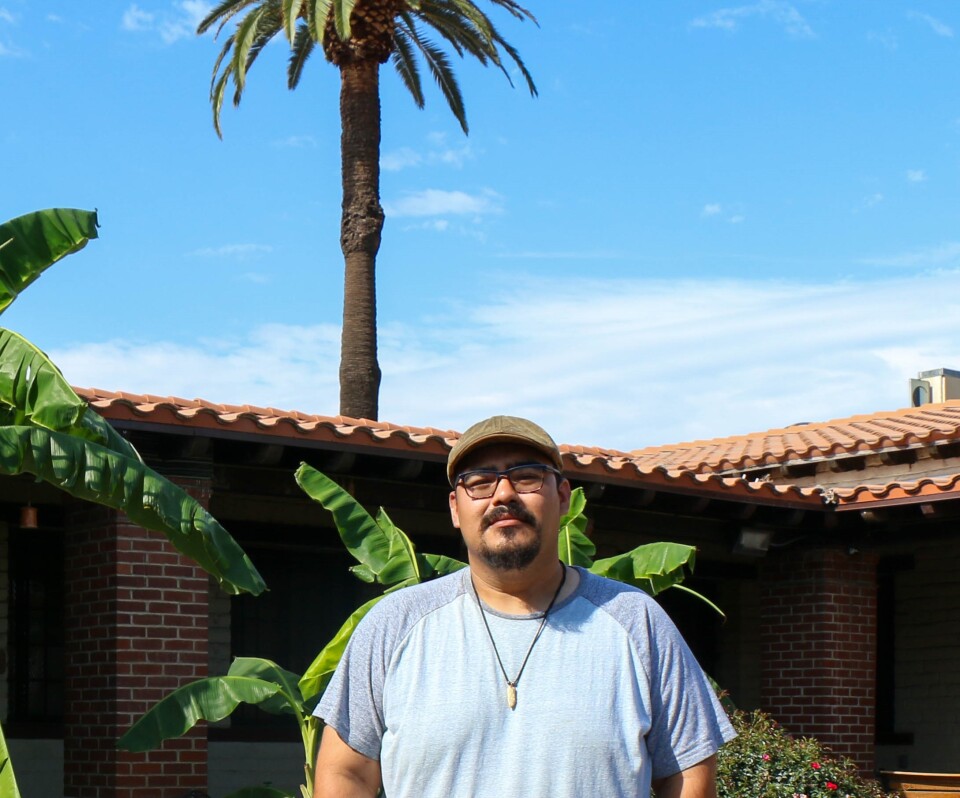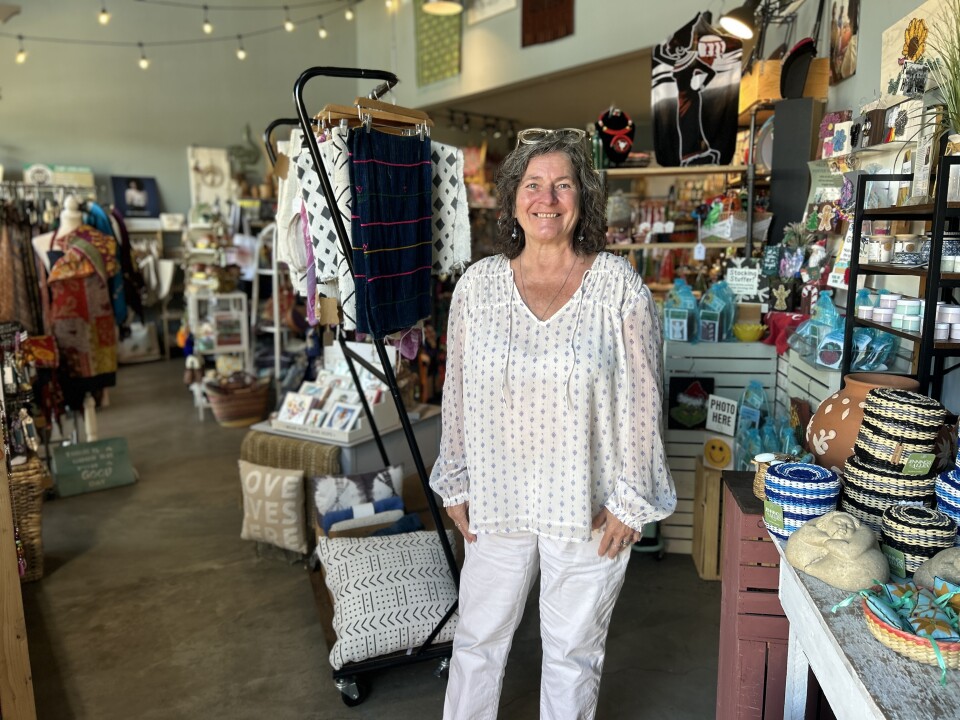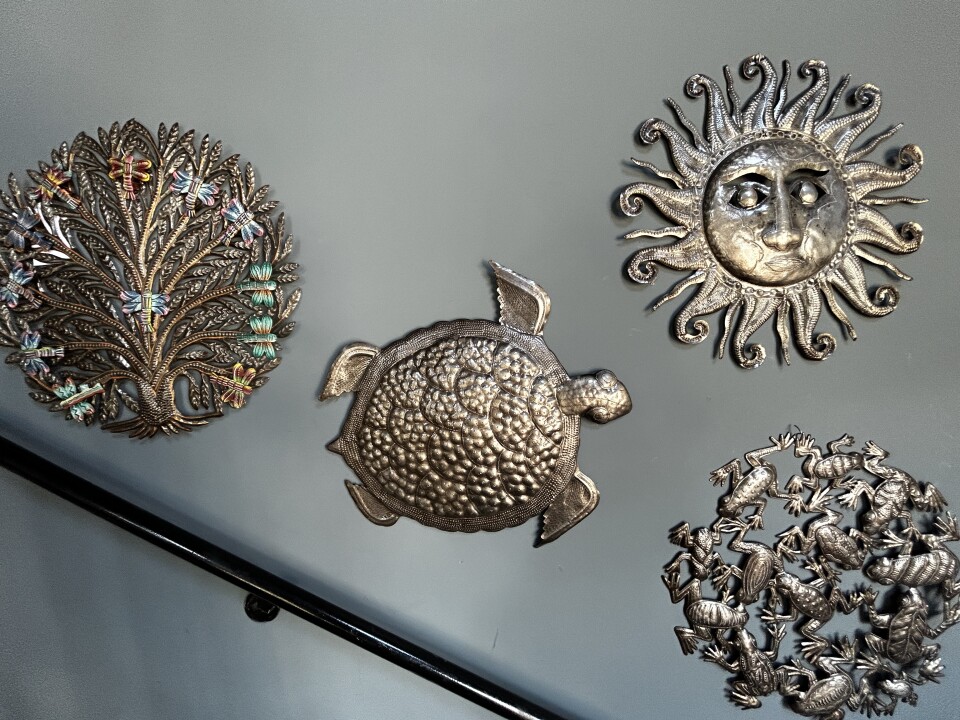This story is free to read because readers choose to support LAist. If you find value in independent local reporting, make a donation to power our newsroom today.
How being more intentional about shopping can also be a climate action

Black Friday, Cyber Monday, all the way through Christmas, online shopping spikes throughout the holiday season. It’s convenient and can be necessary.
But that convenience also has real consequences for communities and the planet.
“I think sometimes we don't take time to consider what the impacts are for real human beings,” said Ellen Reese, professor of Society, Environment and Health Equity at UC Riverside and co-author of the book Unsustainable: Amazon, Warehousing, and the Politics of Exploitation.
“There's definitely the whole politics of consumption, whether we actually need all of these goods that we're purchasing and are there other ways to show our love for each other besides buying a present,” Reese said. “But [when we do need to buy gifts] then we need to consider, where are all these goods being sourced?”
Industrial History of the IE
Read more about how the Inland Empire became the hub for the e-commerce and logistics industry.
It's not just something to consider during the holidays. Over the last two decades, more than a billion square feet of warehouses have been built in the Inland Empire to support e-commerce. That boom has led to higher rates of health-harming and planet-heating pollution in the region. For example, the increase in online shopping in 2020 during the COVID-19 pandemic led to an 18% increase in Amazon’s carbon emissions in 2021, the company reported.

The impacts of online shopping in the IE
Jorge Osvaldo Heredia used to work in warehouses and remembers how there’d be a boost in hiring and longer, busier hours for him and his fellow warehouse workers during the holidays. But after the holiday season many of those jobs would end.
Osvaldo Heredia, now the executive director of the Garcia Center for the Arts in San Bernardino, said as warehouses have boomed, local businesses — and local jobs — have dried up.
“A lot of our local shops have been closing down and I really do attribute that a lot to online shopping,” Osvaldo Heredia said.

For example, in recent years the city’s only art supply store shut down, making the nearest brick-and-mortar store in Riverside. In response, the Garcia Center recently launched an art supply shop that also showcases and sells work made by local artists, as well as provides studio space. It’s called Mercado 536.
It’s a far cry from an online shopping experience, said Yulissa Mendoza, a local artist who helped open the shop.
“Not only are you buying something from someone that is handmade, you will probably run into them as well,” she said.

Osvaldo Heredia said more local, small businesses not only boosts diversity in local jobs, but also improves the quality of life for residents.
“We're doing what we can to work with the people in our community and really try to create a grassroots movement to improve our city for the better,” he said.
As warehouses and industry take up more space, another mode of local shopping — swap meets — have also dwindled in the area, said Darby Osnaya, who grew up in Colton and is a promotore, or community organizer, with the People’s Collective for Environmental Justice.
“To ask people to shop local can be very tough and demanding," Osnaya said. "Ideally, if we can have swap meets and farmers markets that we can go to, that would be great. But there's none here in Colton.”
That’s a reason why the People’s Collective is working with the Garcia Center and other local partners to hold a regular Eco-Tianguis, or eco-friendly swap meet and open-air market. The group held its first Eco-Tianguis last March, featuring local vendors, a clothing swap and plenty of food.
But Osnaya said people shouldn’t feel guilty about online shopping or shopping at big box stores, especially if it’s necessary for their budget or accessibility needs.
I always try to be consumer conscious, however I know that's not the end all be all of fixing the problem.
“I always try to be consumer conscious, however I know that's not the end all be all of fixing the problem,” Osnaya said.

Is shopping local better for the climate?
The climate impact of shopping local depends on how the product you’re buying is made and transported, as well as how far or what mode of travel you use to get it. When you shop at small local businesses, you can usually talk to the business owner or manager about those things.
But more often than not, when we shop at a local business, instead of big box stores or online, there are fewer emissions associated with our buying. And more money stays in the local economy, rather than going to large corporate retailers, which are responsible for roughly 25% of planet-heating pollution (though they say they are working to change that).
“When you shop local, $68 of every $100 that you spend stays in the local economy,” said Courtney Chatterson with the city of Long Beach’s Economic Development Department. “So that means that when you're shopping local, you're not just getting the things that you want, but you're investing in local people.”
The city of Long Beach recently launched its Shop Long Beach initiative, where buyers earn rewards for shopping at local small businesses.
Southern California #ShopLocal Initiatives
It’s worth checking if your city or county has a local shopping incentive program like the ones below.
Shopping 'glocal'
I wanted to check out some of the local businesses near the ports, where about 40% of the nation’s goods come through. In Long Beach, I met up with Teresa Baxter of local shop Fair Trade Long Beach, which is also part of the Shop Long Beach initiative.
“You're going to see a bunch of little nooks and crannies in this store,” said Baxter. “That's because we're a retail collective, so everybody here represents 20 different fair trade organizations under one roof.”

It’s not always possible to buy locally-sourced products. That’s where fair trade can come in. Fair trade certified products are made ethically, meaning fair wages, no child labor, or other human rights violations, and they’re often also more sustainably produced. Baxter’s store, for example, showcases upcycled and sustainably-made products from our own southern California backyard and around the world.
“We do have local artisans and we do have global artisans, so we call it 'glocal,'” Baxter said with a smile. “So caring about your community and the community as a whole.”
LAist Holiday Gift Guides
Check out LAist’s holiday shopping guide, which includes sustainable and local shopping ideas.
There is cut metal wall art made out of old oil drums by a Haitian artist. There are Ecuadorian art pieces made out of tagua nut, an alternative to ivory. A Cambodian artist makes totes and wallets out of recycled cement bags. There’s also Eli’s Garden Corner, where a 13-year-old entrepreneur sells adorable succulent arrangements to save money for college. Each product has a person and a story connected to it…and there are all different price points.

“If we know where it's sourced from and if we know that the person is being paid a fair wage for what they're creating, then it just creates the ultimate vibe in our home and our surroundings,” Baxter said.
Fair Trade Local Resources
- Map of fair trade certified sellers in Long Beach
Just next door to Baxter’s shop, there’s Amarte, another retail collective founded by Claribel Valdovinos. While she’s not fair trade certified, she embraces fair trade principles through the direct trade she does to source her products.
“So I know the families and I go in person and I've seen how the conditions are,” Valdovinos said. “But mostly it's like a mutual collaboration, so I go and ask, like, ‘what would you like to highlight,’ and at the same time give feedback as to what folks are asking for.”
The store features many Indigenous artisans from Mexico, as well as Senegal, who use traditional, more environmentally-friendly methods to create their products. For example, woven palm work by Oaxacan families who raise and care for the palm trees on a collective, and naturally dyed traditional Senegalese clothing.

“When you shop small and you shop local, the items that you're getting here are made with integrity and no one is being exploited,” said Valdovinos. “It's definitely a climate action, from the artisans we collaborate with, knowing that they're using traditional methods, and also at the same time, what we have here is in small batches, so we’re mindful of our carbon footprint.”
While shopping local or fair trade isn’t always guaranteed to be more climate-friendly, understanding where our stuff comes from and who made it helps us all learn how to live better with each other and the planet.
Tips for shopping sustainably
First, ask yourself: Do I need to buy new? Or can I buy secondhand?
- There are lots of thrift, vintage and otherwise secondhand stores across our region. Buying secondhand is one of the most sustainable ways to shop because there's no new pollution from manufacturing a new product. Buying secondhand also keeps waste out of landfills.
If you need or want to buy new, consider shopping from small, local businesses instead of big box retailers, which contribute roughly a quarter of global carbon emissions across the supply chain. Buying small and local requires a lot less transportation for your goods to get to you, even if you shop online, and it supports small business owners in the region. Small businesses often also source products locally, which further reduces emissions.
If you can't #keepitlocal, buy from companies that use sustainable practices across their products' lifespans: from manufacturing to shipping to offering repair or recycling services. Identifying these brands often requires some research and they usually have higher price points, but not always. Read about the company's products and ask for proof or certifications for what they claim. Also, keep in mind that not all eco-friendly claims are what they seem. For example, vegan leather may sound better for animals and the planet, but often these fake leathers are made out of plastic.
You can also keep an eye out for trusted certifications when determining if a brand or product is more eco-friendly. Here's a list of some of the best:
- Fair Trade Certified
- Certified B Corporations
- Climate Neutral Certified
- Forest Stewardship Council
- Global Organic Textile Standard
- Rainforest Alliance Certified
Most of these websites also include lists of companies that are certified.








